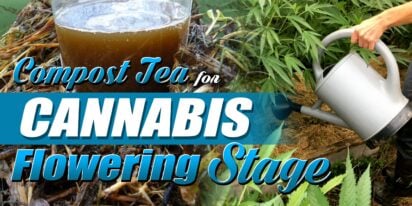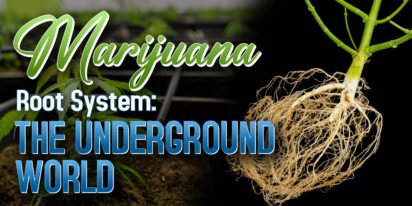
Are You 18 Or Over?
YesOr
No By clicking yes, you certify that you are over 18. By using this website, you agree to our legal disclaimer.605+ Cannabis Strains over 20 Breeders worldwide.
Table of Contents

Table of Contents
Weed plant heat stress is more than just an inconvenience. It’s a physical reaction to high temperatures that can greatly affect your harvest. Picture your healthy cannabis plants suddenly dealing with intense heat, with their leaves curling up to protect themselves. This visual sign is just the beginning, showing that there’s a bigger problem happening within the plant’s cells. To truly understand heat stress cannabis, we need to uncover the complex biological processes that happen when temperatures rise.
Cannabis plants have a way of dealing with excessive heat. When it gets too hot, the plant cuts back on water to prevent evaporation. But this survival tactic also means the plant can’t absorb important nutrients, which makes it less healthy overall.
Under the heat, important parts of the plant like chloroplasts can get damaged. To protect itself, the plant makes special proteins that act like armor against the high temperatures. But these proteins take away energy that could be used for growth and development, which affects the plant’s overall health.
Understanding how plants respond to heat stress helps us appreciate their ability to survive. It also shows how important it is to find ways to handle heat stress on weed plants when cultivating.
Plants need sunlight for growth. But too much sunlight can hurt cannabis plants. It makes the plant’s temperature go up quickly and messes up important processes. This hurts the cells and stops the plant from growing well. Growers have to pick between LEDs and HIDs for light. LEDs are a good choice because they don’t make as much heat and their brightness can be changed. This helps stop heat problems and keeps the plant’s growth healthy.
Imagine being in a room without any air moving around – a stifling experience that is similar to what cannabis plants go through when they don’t have proper ventilation. When the air is still and hot, it becomes difficult for the plant to cool down, so it has to use energy to try to regulate its temperature. This not only makes the plant uncomfortable, but it also creates a good environment for molds and pests to grow. Fans, air conditioners, and heat extractors are really important in this situation. They act like lifelines, making sure that fresh air keeps flowing and that heat doesn’t get trapped.
Cannabis plants need a specific environment to grow well. If the environment isn’t right, they can get stressed. If they are grown outdoors or in a place without good ventilation, they may show signs of heat stress on weed plants earlier than expected. It’s really important to provide shade, good ventilation, and take care of the soil. In dry climates, the balance between the soil and how much water the plant has is very important. When the humidity is lower than 50-60%, the plant releases more water, which causes wilting. This is a sign that something is wrong and needs attention. Making sure the soil and plant have the right moisture levels is crucial to avoid the negative effects of heat stress.
Heat stress on plants first shows on the leaves. These signs are important for growers to take action and protect the plants.
Heat stress not only affects plant growth but also affects the flowering stage, which can affect the quality of the final harvest.
Cultivating cannabis with resilience against heat stress requires a multifaceted approach, addressing both environmental factors and plant management strategies.
To master cannabis heat stress, you need to understand how the environment and plant physiology interact. As a cultivator, you must constantly adapt and be aware of what cannabis plants need. By understanding heat stress, recognizing its symptoms, and using targeted solutions, you can overcome its challenges. This guide will help you become a master of cannabis cultivation, leading to successful yields and strong, high-quality buds.
1. Can humidity levels contribute to cannabis heat stress?
Yes, high humidity levels can exacerbate heat stress in cannabis. While the article emphasizes the impact of low humidity in arid climates, excessively high humidity can impede the plant’s ability to cool itself through transpiration, leading to increased susceptibility to heat stress.
2. Is there a specific temperature range ideal for cannabis cultivation to prevent heat stress?
Yes, maintaining a temperature range between 70-85°F (21-29°C) is generally optimal for cannabis cultivation. Beyond this range, plants may experience heat stress. However, individual strains may have slightly different temperature preferences, and growers should consider these hints.
3. How does the choice of potting soil influence cannabis heat stress?
The type of potting soil is crucial. In extremely dry climates, fast-draining soils can contribute to rapid moisture loss, intensifying heat stress. Conversely, in humid conditions, poorly draining soils can lead to waterlogged roots, compounding stress. Balancing soil moisture is essential for preventing heat stress.
4. Can excessive pruning worsen heat stress in cannabis plants?
Yes, extensive pruning, especially during periods of high temperature, can contribute to heat stress. Pruning reduces the overall leaf surface area, limiting the plant’s ability to cool itself through transpiration. Careful pruning practices and timing are essential to avoid undue stress during heat-sensitive phases.
5. Do certain strains exhibit higher resistance to heat stress?
Yes, some cannabis strains demonstrate better resilience to heat stress. Strains originating from warm climates may inherently possess adaptations that make them more tolerant to elevated temperatures. When selecting strains, considering their natural habitat and climate preferences can contribute to a more robust and heat-resistant cultivation experience.

[ez-toc] In indoor gardening, maintaining an optimal temperature within your grow tent is crucial for the health and productivity of your plant

[ez-toc] Welcome to the delightful world of cannafudge crafting, where sweetness meets sophistication, and cannabis infusion adds a unique twis

[ez-toc] You’ve finished trimming your weed, but what about those leftover stems? Don’t throw them away! These seemingly useless bits can a

Feeling high can be an exhilarating experience, but it's essential to make the most of it by engaging in activities that enhance the sensation a

[ez-toc] Starting with planting cannabis seeds might seem simple, but how deep should cannabis seeds be planted for them to grow well. In this

[ez-toc] In the realm of cultivating cannabis, maximizing growth during the flowering stage is a top priority for growers. While various method

[ez-toc] Nutrient burn is a common issue among plant enthusiasts, often resulting from over-fertilization or improper nutrient application. It

[ez-toc] Welcome to our complete guide to dealing with harmful pathogenic mold in cannabis. For those who grow cannabis, preventing mold is vit

In recent years, there has been speculation about “did Shakespeare smoke weed?” This idea originates from a study by South African anthropol

[ez-toc] Welcome to the hidden world beneath the soil – the inside of the marijuana root system. While the vibrant leaves and resinous flower

Are You 18 Or Over?
YesOr
No By clicking yes, you certify that you are over 18. By using this website, you agree to our legal disclaimer.